Chris Parkin reviews a new semi-auto rifle... The Winchester Wildcat in .22 LR is a breath of fresh air that adopts the latest tech – a real plinking powerhouse!
 credit: Chris Parkin
credit: Chris Parkin
It’s great to see a manufacturer bring a fresh look to a familiar concept. Winchester have taken the .22 semi-auto based on the Ruger 10-22 rotary mag, and produced their Wildcat rifle in Turkey with additional magazine features and innovative approach to simpler cleaning. It’s not all just about cutting costs!
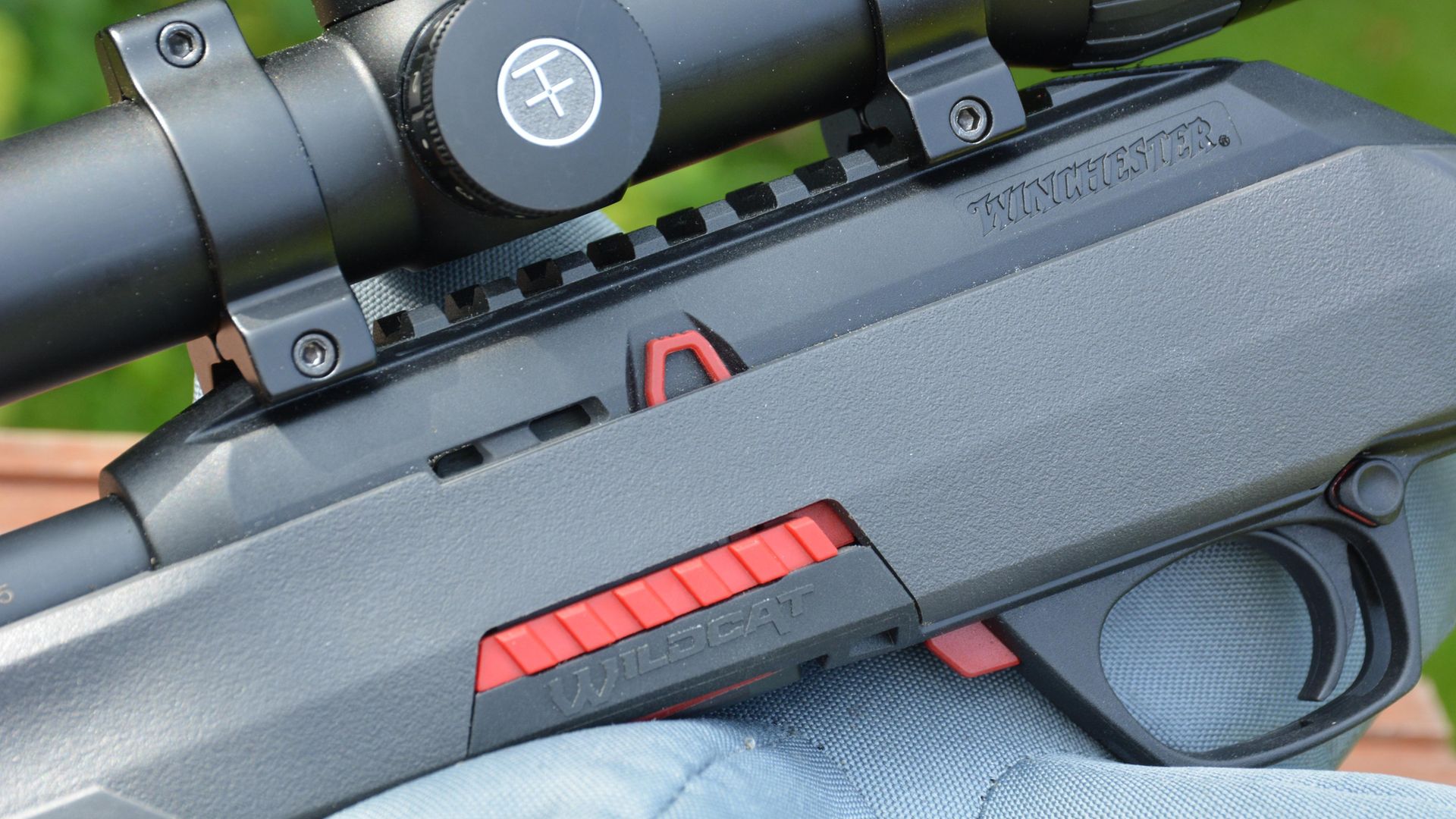 credit: Chris Parkin
credit: Chris Parkin
Winchester Wildcat .22 LR - key features
It’s available with a 16" or 18" barrel finished with a ½" muzzle thread, and that’s one of the few steel components on a rifle that has used polymers extensively. Yet with intelligent design and attention to mechanical requirements, Winchester have produced an interesting rifle, not just a cost cutting exercise.
Investing in injection moulding tooling is incredibly expensive, showing the significant commitment Winchester have made in the development of the Wildcat. The polymer stock is lightweight yet remains stiff enough to fully free-float the barrel and shows handy details like Picatinny slots and sling studs moulded in for accessories on the forend’s tip.
Grip is assured with finger grooves in the stippled, deep-grey finish, giving the rifle a distinguished look beyond its price point, with a colour scheme that contrasts well with the red details. The underside magazine is a 10-round rotary unit made from red, black and clear polymers, interchangeable with any Ruger 10-22 magazine. Yet the Winchester unit boasts a rear serrated rotor enabling you to ease spring tension to speed up loading without thumb pressure on the bullet exerting the force. A metal pawl on the left rear also locks the bolt open when the last round has been shot – which no Ruger offers. Being transparent, it also enables visual inspection of the number of rounds remaining.
There is a front release catch as well as twin serrated red sliding catches on both sides of the rifle, which allows the mag to drop unhindered into your palm. The bolt can be disengaged with either the charging handle cycling the action, or on the left side with a sliding plunger button. These are great features and in bright colours, making safe tuition easier for those less familiar with rifles. It’s commonly encountered that black controls hide easily within plain sight when learning a new gun.
More innovation is displayed to the rear of the receiver at the back of the Picatinny rail. A red button is recessed and with a firm press after the magazine is removed, the trigger guard can be pulled down and the entire action internals drawn free from the receiver. You can inspect, clean and dismantle the blowback bolt system, carriers and springs, clean debris from the action face and remove dust and firing residue from the spring if the action has become sticky, or just as general maintenance.
This is an inspiring step taken by Winchester and has been an innovation highlight of the year for me. The residual hole where the release button was, now allows a regular cleaning rod to be inserted through receiver to clean the barrel breech-to-crown, as is the more familiar method with bolt action rifles.
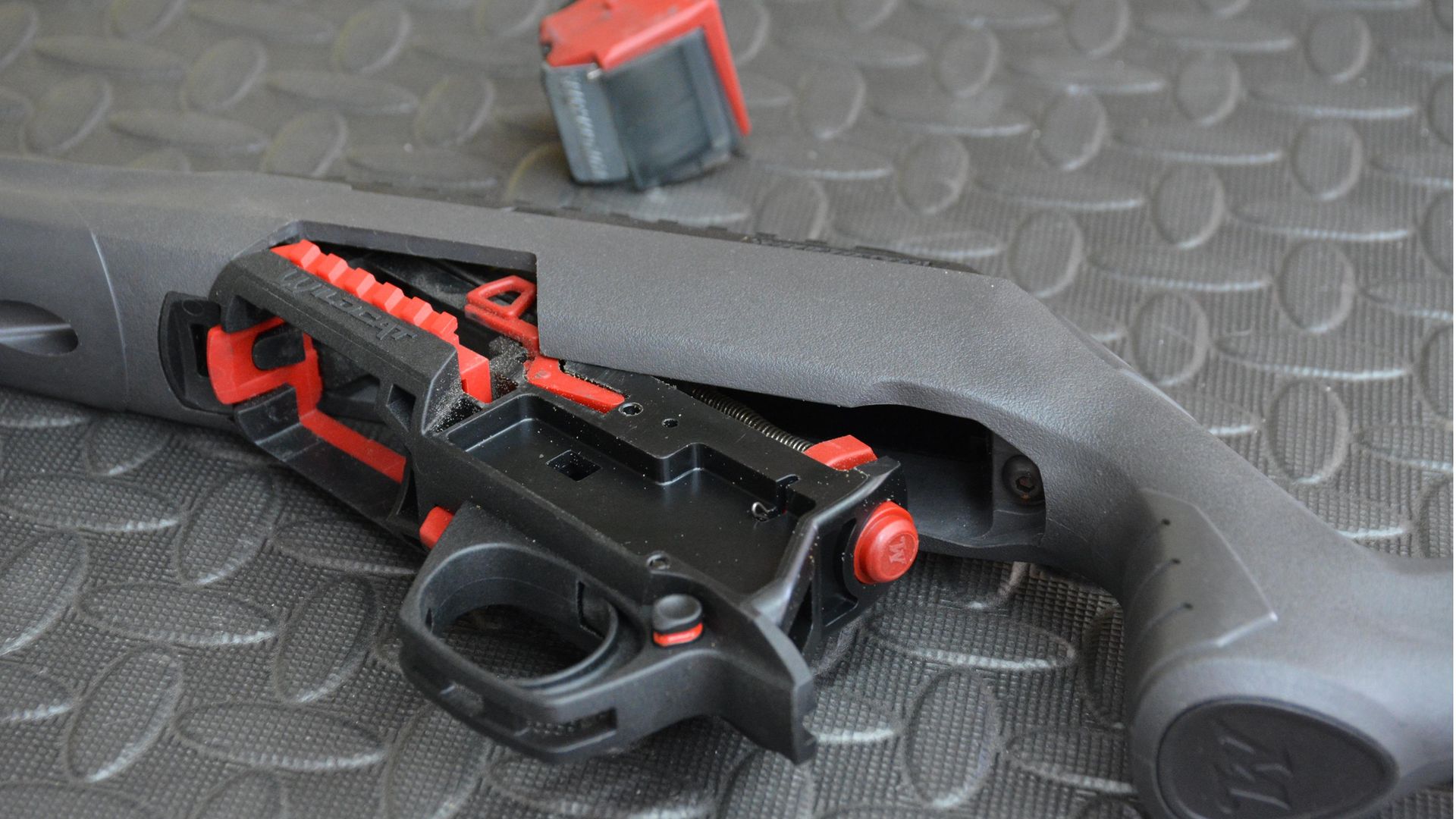 credit: Chris Parkin
credit: Chris Parkin
Winchester Wildcat .22 LR - details
Another clever function is the charging handle for the bolt, which normally protrudes from the right-side ejection port. This one pivots, so you don’t need to remove it; it remains captive with the bolt. It simply springs vertically to re-enter the receiver after cleaning and then drops clockwise back to its perpendicular position though the port for regular operation once fully reassembled.
This detachable mechanical package has a claw at its front and is as easy to remove and return as the magazine on some other rifles. It’s almost like an easily stripped upper and lower from a military rifle, designed for hassle free attention in the field without tools. None of this is machined, fabricated or cast metal. It’s all polymer but for the key metallic springs, pins, bolt and extractor/ejector mechanism itself. The action operates more quietly than most and that’s really appreciated when hunting.
The receiver, Picatinny rail and trigger guard are all polymer, as well as the stock. I found the gun cycled well in this quieter format and was more easily cleaned. The trigger pulls are single stage with minimal creep and break surprisingly consistently at 230g/8oz.
You get a feel for it, with your index finger pad becoming confident on the narrow blade. A crossbolt safety sits above and to the rear and can be swapped to your preference as to which side is ‘safe’. There is a further red plunger in front of the trigger guard to lock the bolt open if required, but it’s not something I found necessary with the inherent function of the Winchester’s mag. This is a control you are more likely to use if venturing into high-capacity Ruger mags that don’t offer the auto-hold-open function.
The stock shows modern design with weight reduction, being effectively empty between upper and lower struts that extend to the butt plate with a 345mm/13½" length of pull. The overall weight is 1.95kg/4.3lb, so the gun is light, fast and suitable for shooters of all sizes, warm in the hands and grippy with ridges where required, yet without any angular edges that are likely to snag fingers or clothing. Open sights are fitted with a laterally adjustable aperture at the back on a sloping dovetail behind the Picatinny rail (not Weaver). A fixed blade at the muzzle sits behind the capped thread. I find the peephole rear far easier to use and explain to new shooters. It’s simpler than a blade and notch in my experience, especially for those with weaker focusing.
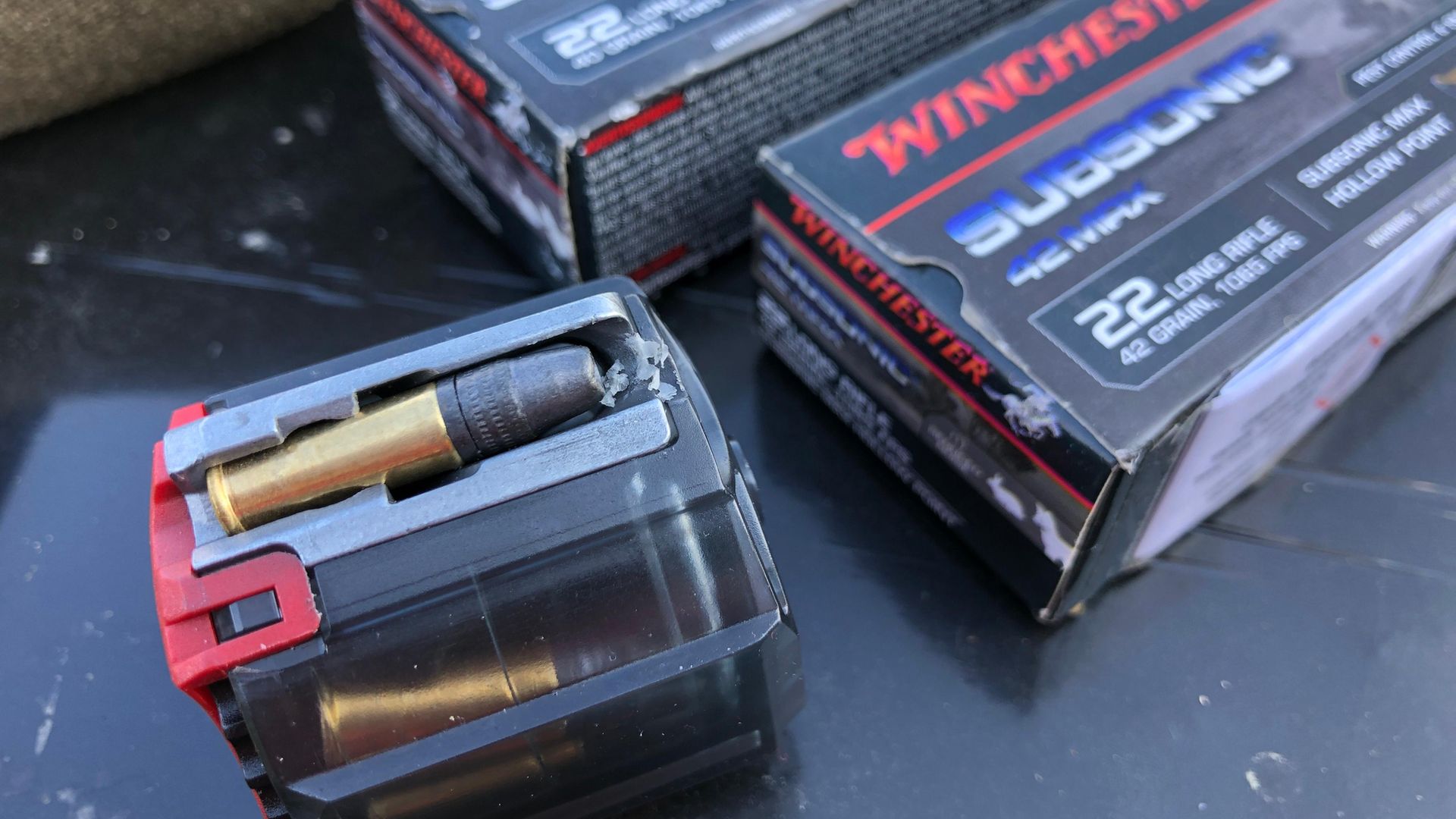 credit: Chris Parkin
credit: Chris Parkin
Winchester Wildcat .22 LR - practical shooting test
Plinking with the fixed sights checked functionality straight from the box and I was pleased to find no problem loading the mags or with any action control operation. I swapped to a 1-6x24 scope in low rings that suited the streamlined stock layout and found the dimensions complemented this well, with a reasonably supported cheek position.
If you are deliberately forceful with the rifle’s forend you can feel the stock flex a little, but in reality this is deliberate effort with neither primary zero nor intermittent problems found with the mean point of impact. At 50m with a 6x scope I was able to differentiate between well-suited ammunition types, ensuring the flyers were not the rifle’s fault or sighting mistakes on my part.
SK Rifle Match .22 rimfire ammunition provided the smallest groups, with RWS Subsonic hollow point close behind and more suited to pest control. RWS generally seems to be one of the slowest rounds on average across many review rifles, which becomes especially helpful in semi-auto reviews because it tests the limits of how little recoil energy is needed to cycle the action. It’s also very clean and I’m pleased to say that with just 942fps average speed for its 40gr bullet (79ft-lb), the rifle was still 100% functional. The SK rounds managed 1,000fps for the smallest 10-round 30mm groups at 50m (89ft-lb). 42gr Winchester hollow points were a bit disappointing, with more like 80mm groups.
With a 1-6x mag scope at 50m the rifle was incredible fun for all those who shot it at paper targets or steel. Now, after 800 rounds through it, two light cleans with compressed air and one deep clean for wax/lead, I have suffered only seven stoppages, all of which were partial ejections rather than misfeeding issues.
Away from the bench for more dynamic fire and movement, I really enjoyed using the rifle. The last round hold-open feature really sped matters up, without anyone suffering a ‘dead man’s click’ on an empty chamber after losing count of shots taken. Magazine changeovers needed slightly firmer pressure to lock them in place than with a Ruger because of the additional hold-open spring functionality, but I found that the rotor mechanism on the rear of the mag made filling them much faster. The action remained fast, with clean bolt reciprocation regardless of the damping effect of the polymer.
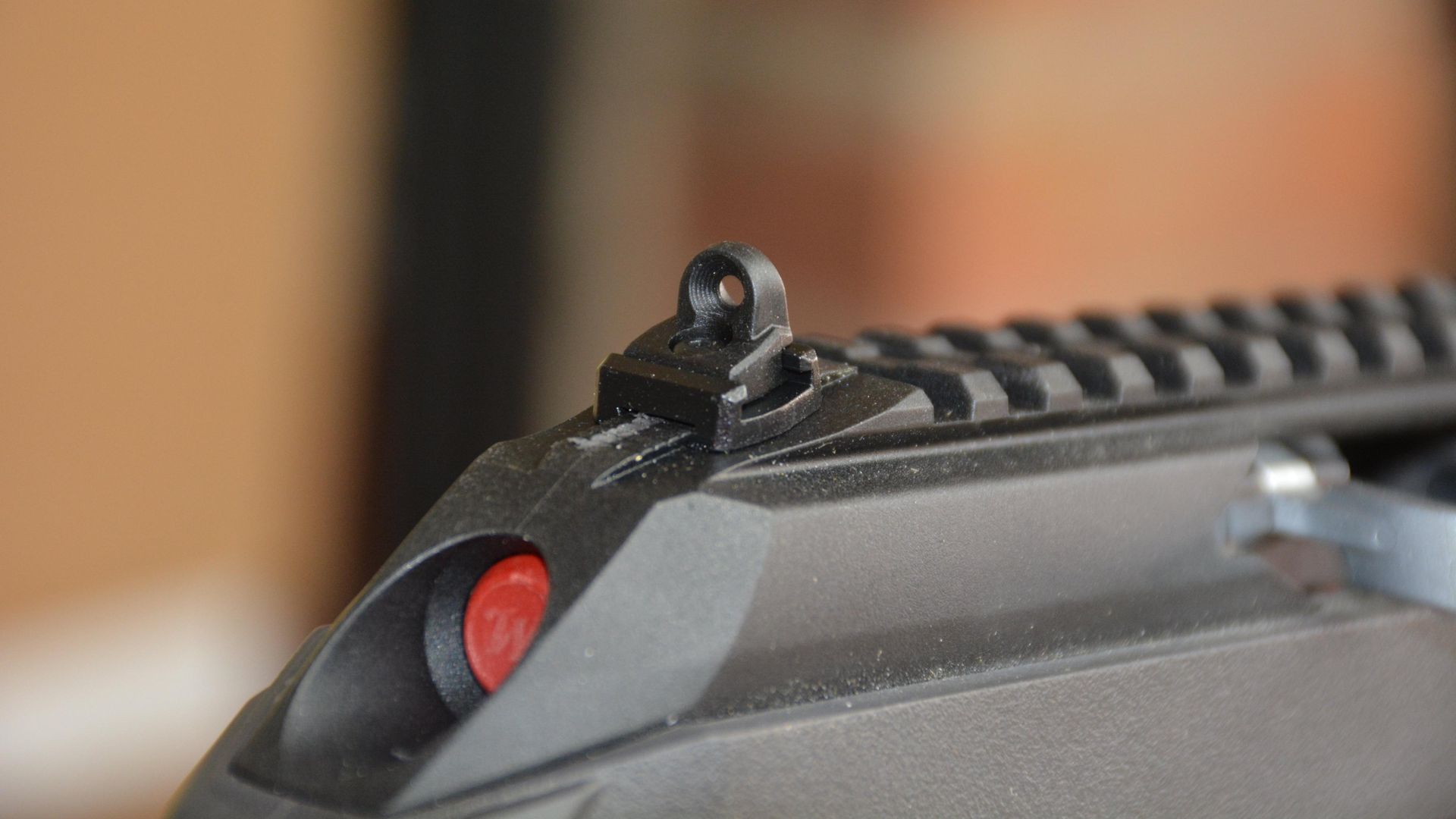 credit: Chris Parkin
credit: Chris Parkin
Winchester Wildcat .22 LR - test conclusion
It’s never going to be a precision shooting machine that lasts forever, but the Wildcat is a gun that does exactly what it promises, with pleasant innovation and functional purity surrounding intelligent design and use of materials. It perfectly combines old-world semi-auto charm with up-to-date technology at an attractive price for a brand-new gun.
The Wildcat, made in Turkey, enjoys the benefit of the entire firing mechanism being easy to strip from the rifle for cleaning without any tools required. Difficulty with disassembly is a factor that so often contributes to shooter frustration and disappointment with semi-auto rimfires.
I especially liked the design concept and improvements on the Wildcat. It’s certainly more effective with easier cleaning and at low cost straight from the box, which I find a genuinely refreshing approach to encouraging new shooters. I have also shied away from much semi-auto use for rabbiting in the past, particularly after dark, but the Wildcat seems to neutralise my doubts over action function and controls, being far more modern than a generic 10-22 for bolt stops/hold-open and mag operation.
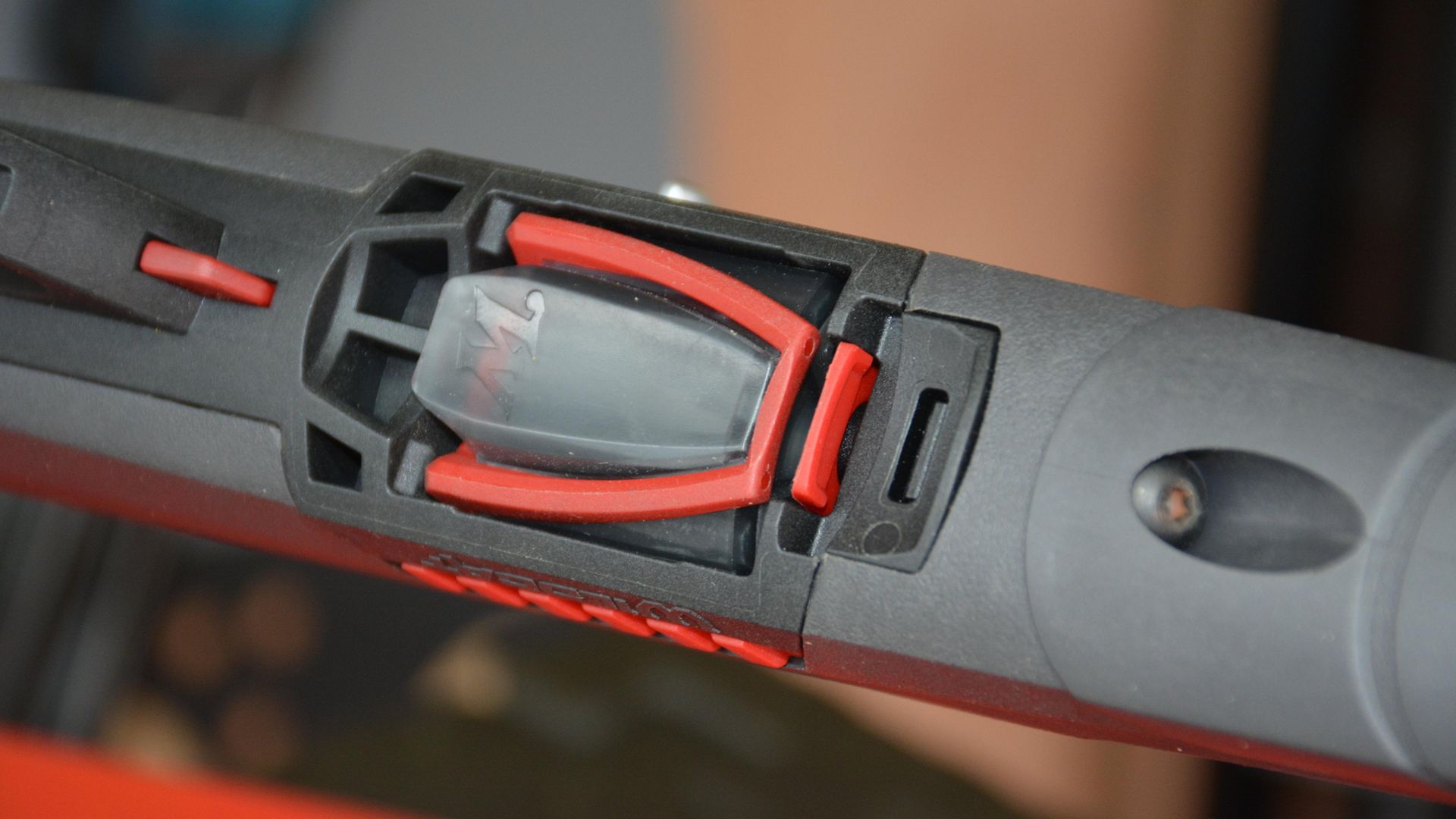 credit: Chris Parkin
credit: Chris Parkin
Specifications
Calibre: 22 Long Rifle
Material: Steel barrel, Polymer action
Overall length: 920mm/36.25”
Weight: 1.95kg/4.3lbs
Magazine capacity: 10+1 detachable
Trigger: single stage 2300gr pull weight
Barrel length: 460mm/16”
Muzzle thread: ½”x20 inc. thread cap
Stock Material: Polymer
Sighting: Adjustable aperture fitted with blade, Picatinny rail for scope (also inc, sling studs)
RRP: £409
Contact
Browning UK
Tel: 01235 514550
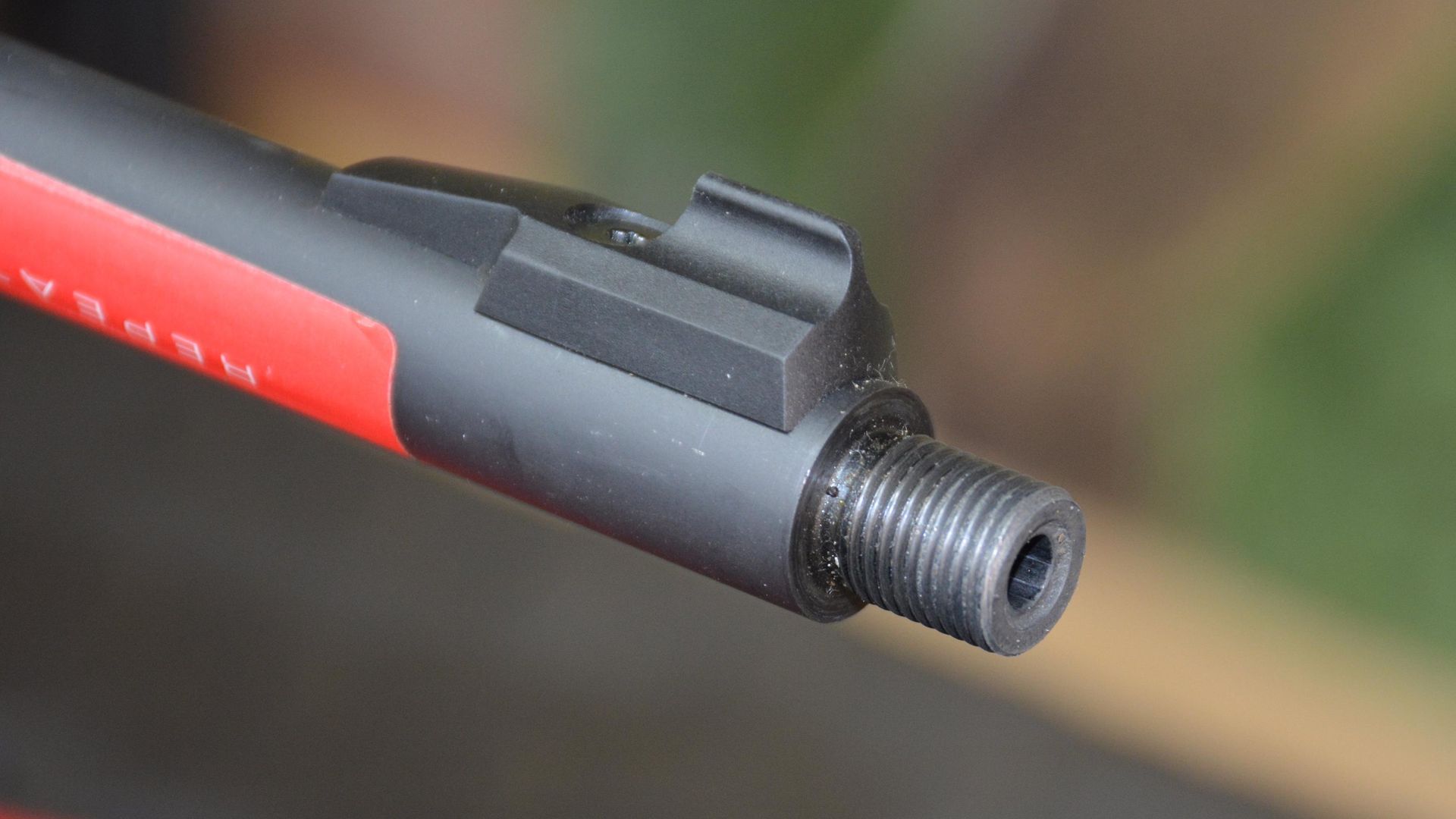 credit: Chris Parkin
credit: Chris Parkin